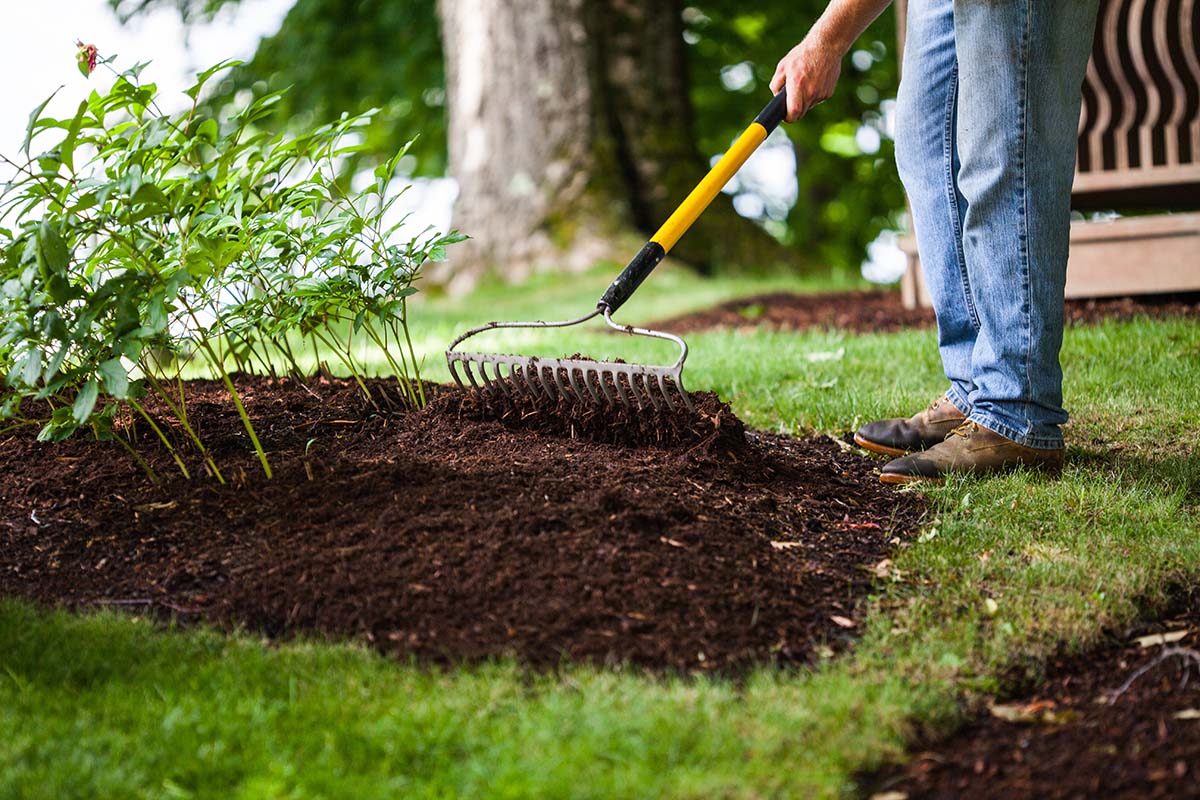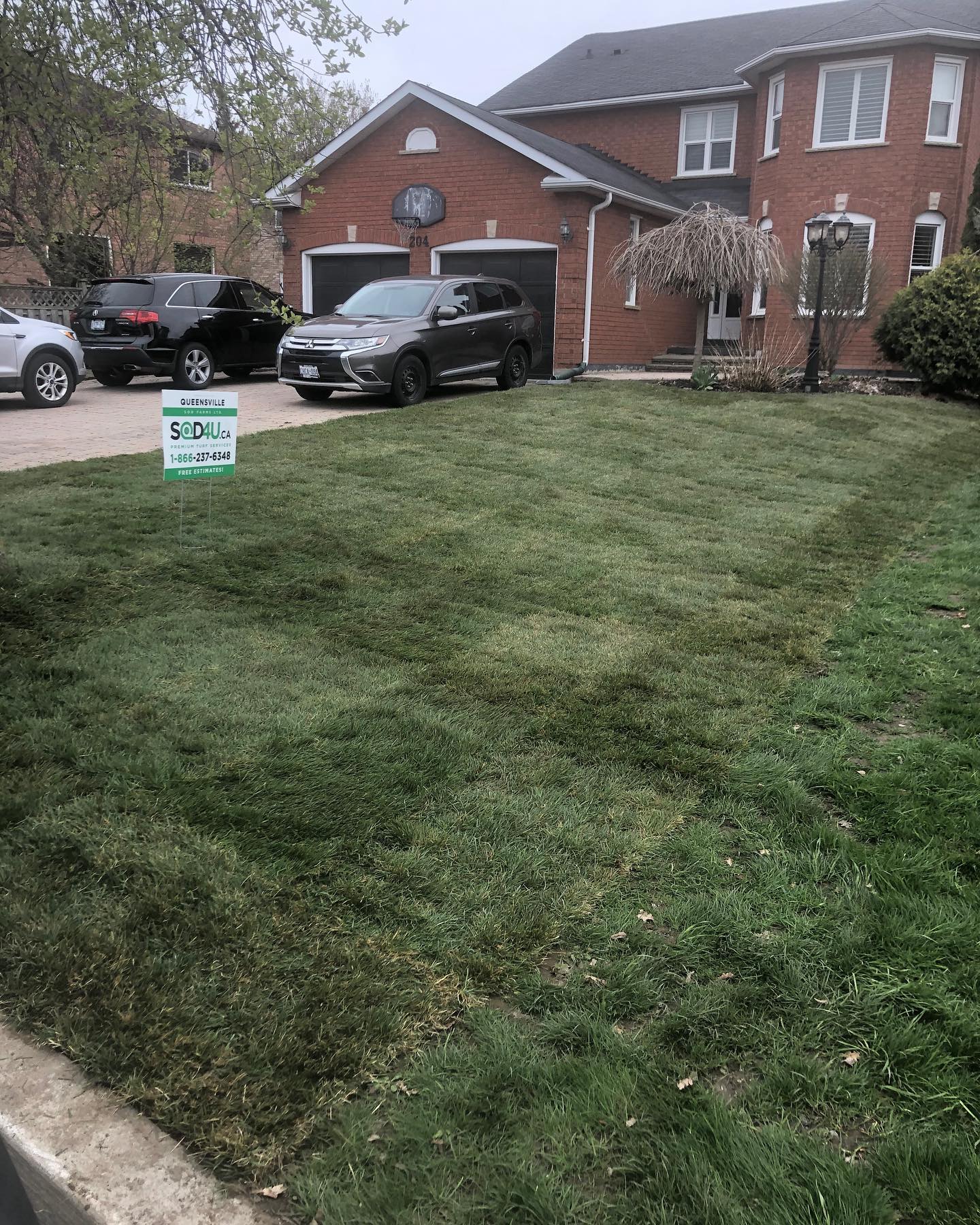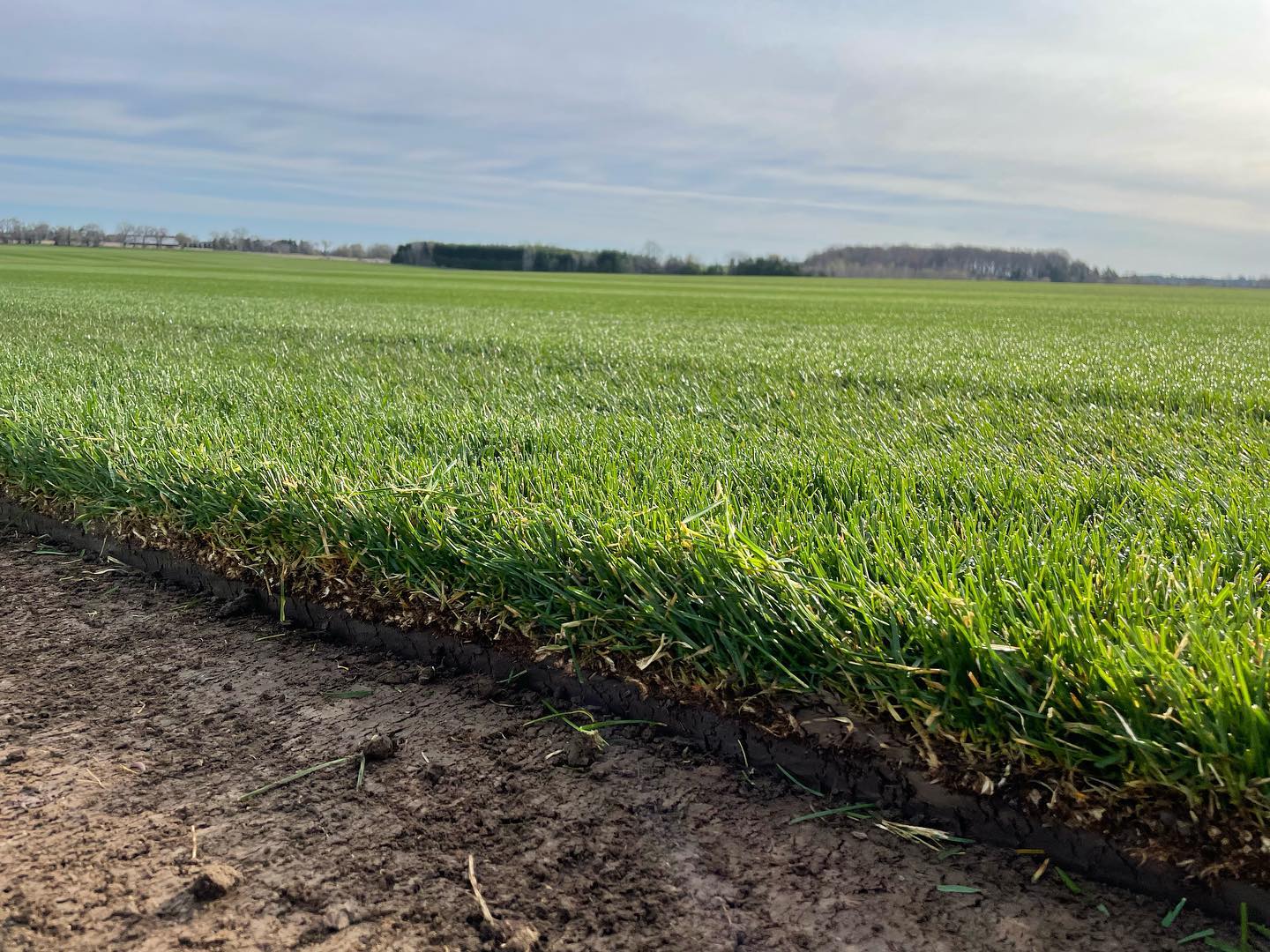When we think of lawns, we see green grass and sod. When we think of gardens, it’s flowers. But we can often forget about the precious mulch underneath helping them flourish and controlling weeds. Not sure how mulch can help your yards or how to lay mulch? We’ll explain how mulch helps you control weeds and the where, when, and how of the best mulching techniques.
What is Mulch?
By definition, mulch is any material that’s layered on top of soil. It’s either natural, like our various mulches made from wood chips, but it can also be artificial. These are often large sheets of hard plastic. Both have the same purpose of protecting the soil underneath, but natural mulch, while it does decay slowly over time, offers additional benefits to your yard. It controls weed growth and adds nutrients to the soil, better retains moisture, regulates temperature, and looks more aesthetically pleasing.
How Does Mulch Control Weeds?
Wood mulch isn’t typically laid on a lawn itself. Instead, it is laid over open soil such as in gardens or at lawn edges to provide a protective barrier. These open areas of soil are vulnerable to weeds and the seeds they scatter. It’s often from these spots in your yard that weeds then spread into your lawn. The solid layer of mulch blocks seeds from landing in the soil and taking root. The same layer of mulch also blocks the sunlight that allows seeds and plants underneath to grow. In essence, mulch is a natural roof that keeps weeds out.
Where to Lay Mulch?
Mulch is great for weed control because it blocks plant growth on that part of the soil. However, that also applies to grass. Lay mulch where you don’t want any plants to grow, including grass. Mulch is best laid on the edges of your lawn and between plants in your garden. This will keep grass and other plants from spreading where they shouldn’t while providing aesthetically pleasant spacing and borders. These edges and more open areas are more vulnerable to weeds and other pests, so the mulch will help protect your sod and flowers from nasty invaders.
When to Lay Mulch?
Mulch is best laid twice a year. We typically recommend you lay mulch in the Spring and Autumn. The best technique is to regularly monitor the mulch. You can tell the mulch needs a new layer if you can start to see soil underneath or it breaks in your hand when you pick it up. At this fragile state, the mulch has become a layer of topsoil. This means it is a fertile growing area for all plants. Rather than weed control, old mulch can foster weed growth, so put down some fresh mulch.
How to Lay Mulch?
When you know where to lay your mulch, you need to spread it to an appropriate depth. Mulch should be spread at a layer between 2 and 3 inches. If laid too thin, it won’t provide full coverage and weed control. If laid too thick, it will become an attractive area for rot that attracts other pests to your yard. Laying mulch is all about a happy medium.
Giving Trees Their Space
It’s a good idea to lay mulch around your yard’s trees if they’re surrounded by open soil, but this requires a proper technique. If you are laying mulch around your trees, give the trunk at least 3 inches of clearance. Mulch’s ability to retain moisture is great for the tree’s roots but unhealthy for the tree’s base, which can expose it to pests and illness. Natural mulch decays to the forces of nature that target wood, which will naturally spread to the living tree. Keeping mulch away from the tree’s base will also keep that rot at a safe distance.
Mulch Masters Plan Ahead
The best technique for mulching is planning ahead. Determine where you want to lay any mulch in your yard before purchasing. Measure those areas to determine the total coverage you will need. Depending on how thick you lay your mulch, a cubic yard bag of mulch can cover an area up to 160 square feet with 2 inches of coverage. Our 20L bags cover about 4 square feet at the same depth. By knowing the area and depth of coverage, you’ll know how much mulch you’ll need.
Time to Mulch
Now you know the best techniques for the why, where, when, and how of laying mulch for weed control. All that’s left is to pick the right colour that best complements your yard and home. Queensville Sod offers mulch in brown, black, and natural colour varieties. If you’re looking to fully finish your yard, don’t forget to browse our gravel and stone.





